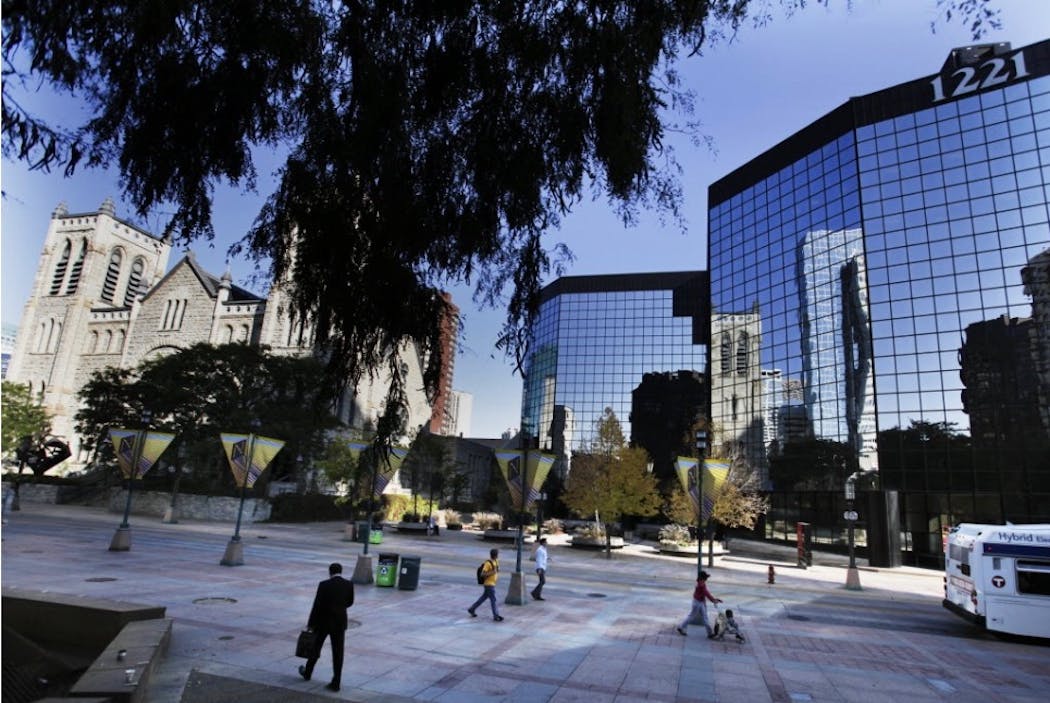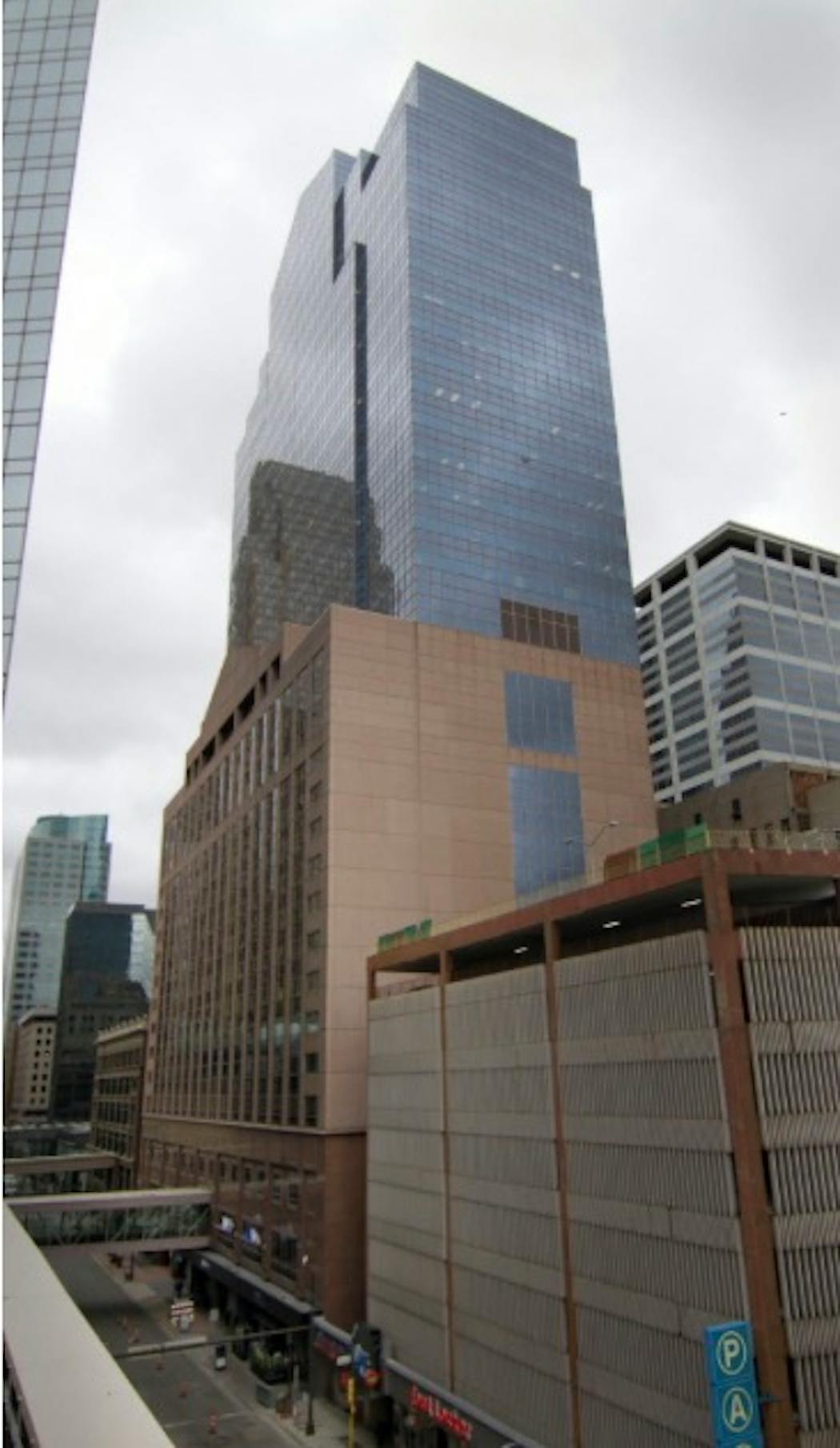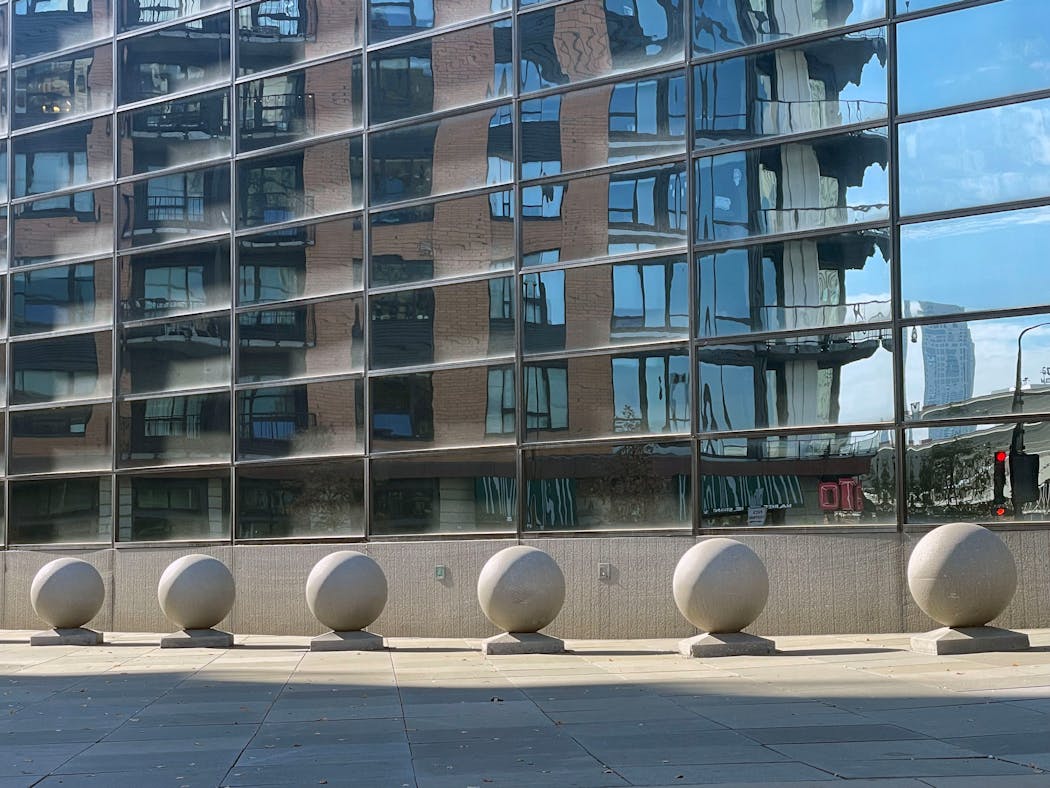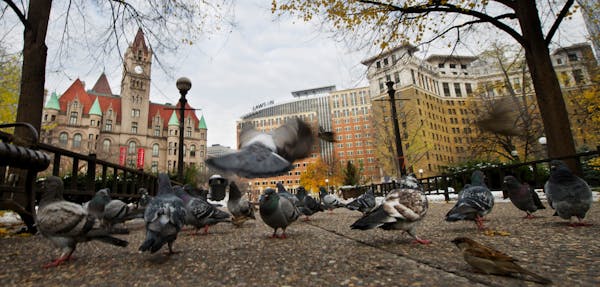Tastes change. It's entirely possible that some future account of the lost architecture of downtown Minneapolis will mourn the loss of the Wells Fargo Operations Center (255 2nd Av. S.). Its plain blue glass facade might be hailed as a work of pure abstraction, challenging the world with its own reflection.
But probably not.
When it's torn down for the Harmonia housing, office and retail development, it's likely that no one will show up and wipe away a tear. It was praised when it was built in 1979, perhaps because downtown needed a boost, and this four-story diagonal nonentity was better than a parking lot. Still, why would anyone get excited over a refugee from a suburban office park?
Blame the IDS, perhaps.
Before the beloved 55-story tower went up in 1972, downtown was mostly stone and brick, with some dreary examples of postwar modernism.
The most interesting building was the First National Bank, now the Canadian Pacific Plaza building (120 S. 6th St.), a crisp iteration of the corporate style popular in New York and other big cities. The rest of the crop was emotionally stunted: the drab River Towers condos near Hennepin and Washington avenues, the blocky boredom of the demolished Sheraton-Ritz Hotel. The Northwestern National Life Insurance building (now Voya Financial 20 Washington) has some classical swank, but it's the exception.
The IDS wasn't just impressive for its height, but its cladding: seemingly uninterrupted glass. It was the epitome of the skyscraper. The serrated corners cinched the building as it rose, and the dark cap seemed to terminate it at the best possible height. From one angle, it was thin and graceful, from another, broad and strong.
But Minneapolis wasn't the only city having a big mirrored-glass skyscraper. Everyone got one. For a while blue mirrored glass was all the rage. But different hues were experimented with. In Bloomington, the Control Data Corp. building was clad in a coppery-red hue that still looks impressive, particularly when ignited by a summer sunset. In Pittsburgh, Philip Johnson designed the PPG Place with Gothic elements expressed in brown glass.
But for the most part, glass buildings were blue. An inoffensive hue. The color of sky and water.
In the years after the IDS was built, a series of small blue wannabes appeared in downtown Minneapolis. On Nicollet Avenue, a few steps in from 6th Street, there was a six-story building with a facade that projected out in blue bay windows. It looked like a shard that fell off the IDS, and had nothing to do with any of its neighbors. It was demolished in 1999 for a 31-story tower at 50 S. 6th St. — a good trade. At the other end of Nicollet (1221) there was another blue box, now demolished and remembered fondly by few.
We still have Plaza VII, now PwC Plaza, a glass tower that rises from a base of pink stone, steps back and culminates in a pediment made of blue mirrored glass. Not bad.
Across the street from Plaza VII is another mirrored-glass tower, the Minneapolis Marriott City Center. It's the most interesting part of the otherwise lamentable City Center. It leavens the oppressiveness of the block-straddling bunker with its weightlessness, and provides a sharp-edged rebuke to the unforgiveable 33 South Sixth. Of all the mirrored-glass buildings downtown, it might be the best companion to the IDS, simply because its shape is unusual and assertive.
The mirrored-glass style may have brought new life to moribund skylines, but the buildings ended up as solipsistic statements, uninterested in engaging with their neighbors.
Luckily, the building boom of the 1980s and '90s returned to stone and classic styles, such as the Wells Fargo Center at 90 S. 7th Street. But mirrored glass seems like it will never completely go away.
Downtown's newest tower, the RBC Plaza, is a full-strength assertion of the mirrored-glass aesthetic. It has an icy vibe, but its shape is rote, and a bit too blocky to soar.
Stone and brick give a city heft and presence. One of the boons of the residential boom downtown is the absence of mirrored facades. You might lament the sameness of modern apartment and condo facades, with their prefab sheets of brick and pointless colored boxes, but they make for livelier streets than a row of mirrors staring back at each other.
A great glass skyscraper could still be built, and we'd love to see it. But the era of the small glass box is done. And no one need lament the end of the Wells Fargo Operations Center. Unless you were used to stopping now and then, and checking to see if your hair looked good or your tie was straight. For that, the building was great.
Here's how Phish is using the Sphere's technology to give fans something completely different
4/20 grew from humble roots to marijuana's high holiday







